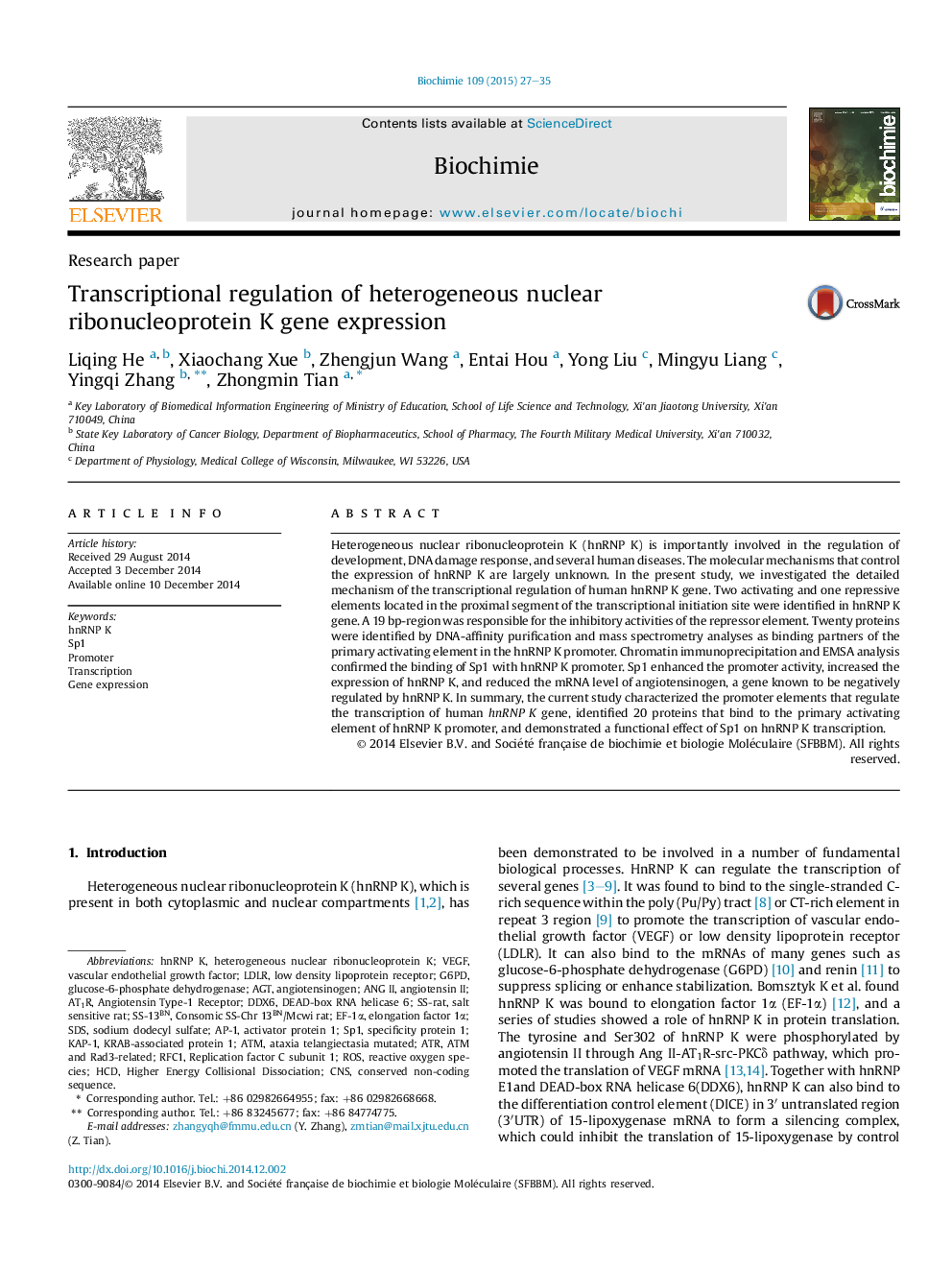| Article ID | Journal | Published Year | Pages | File Type |
|---|---|---|---|---|
| 1952073 | Biochimie | 2015 | 9 Pages |
•This study examined the transcriptional mechanisms of hnRNP K for the first time.•There are three promoter elements existed in the proximal region of the transcriptional start site.•The function of these elements was different in different cell lines.•Using DNA-affinity chromatography we identified 20 transcription factors could bind to the basal promoter region of hnRNP K.•Sp1 could regulate the transcription of hnRNP K.
Heterogeneous nuclear ribonucleoprotein K (hnRNP K) is importantly involved in the regulation of development, DNA damage response, and several human diseases. The molecular mechanisms that control the expression of hnRNP K are largely unknown. In the present study, we investigated the detailed mechanism of the transcriptional regulation of human hnRNP K gene. Two activating and one repressive elements located in the proximal segment of the transcriptional initiation site were identified in hnRNP K gene. A 19 bp-region was responsible for the inhibitory activities of the repressor element. Twenty proteins were identified by DNA-affinity purification and mass spectrometry analyses as binding partners of the primary activating element in the hnRNP K promoter. Chromatin immunoprecipitation and EMSA analysis confirmed the binding of Sp1 with hnRNP K promoter. Sp1 enhanced the promoter activity, increased the expression of hnRNP K, and reduced the mRNA level of angiotensinogen, a gene known to be negatively regulated by hnRNP K. In summary, the current study characterized the promoter elements that regulate the transcription of human hnRNP K gene, identified 20 proteins that bind to the primary activating element of hnRNP K promoter, and demonstrated a functional effect of Sp1 on hnRNP K transcription.
